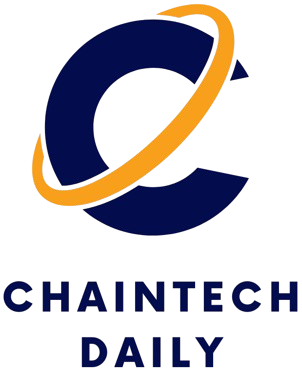Disclosure: The views and opinions expressed here belong solely to the author and do not represent the views and opinions of crypto.news’ editorial.
For years, Bitcoin’s (BTC) role in crypto was oddly static. It was the most valuable, most trusted, and most widely held asset — yet it mostly just sat there, locked in vaults and quoted in headlines more than actually used. But that stillness was the point. Bitcoin wasn’t trying to be Ethereum’s (ETH) replica, and it wasn’t built for programmability. It stood apart by doing one thing well — storing value.
Summary
- Bitcoin is evolving from a static store-of-value to a productive capital, as tools like synthetic assets, structured payouts, and collateral models emerge, BTC is being put to work, not just stored.
- BTCFi is gaining real traction — with a 2,700% surge in value locked over the past year, protocols are beginning to unlock native yield on Bitcoin without forcing holders off-chain or into centralized platforms.
- It’s not DeFi 2.0, BTCFi isn’t chasing Ethereum’s composability or speed; it’s building slowly and securely, aligned with Bitcoin’s conservative ethos and long-term user base.
- The bottleneck is fragmentation; BTCFi needs shared standards, better bridges, interoperable tooling, and UX that welcomes both institutions and retail participants.
- Durability, not hype, will define BTCFi’s future. By focusing on cohesion, simplicity, and Bitcoin-native infrastructure, BTCFi could create the rails for a long-term, low-friction financial layer built around BTC.
That posture, though, is starting to change, not in the codebase, but in how the ecosystem treats it. Miners are tokenizing operations, and new tools, from structured payouts to synthetic wrappers and yield products, are forming. For the first time in a while, Bitcoin is being used as collateral and productive capital.
This is BTCFi — and it’s finally catching fire. It may not look like a revolution yet, but it’s starting to unlock a more accessible, liquid, Bitcoin-native layer of finance.
From cold storage to cash flow
Over the past year, total value locked in BTCFi protocols has surged more than 2,700%, reaching $8.6 billion. That’s modest compared to Ethereum’s DeFi stack, but the signal is strong: a productive layer around Bitcoin is beginning to take shape.
At its core, BTCFi is a simple idea with complicated roots. Essentially, it refers to a growing set of tools that let people put Bitcoin to work through staking models, synthetic assets, and protocols that generate on-chain yield — all without requiring holders to leave the Bitcoin ecosystem.
Until recently, there was no real path to native yield on Bitcoin. The base layer simply didn’t support smart contracts, token standards, or flexible value transfer. That meant financial utility had to come from wrapping BTC on other chains or posting it as collateral in centralized systems — a tradeoff many long-term holders were never fully comfortable with.
Now, new token formats are giving Bitcoin more flexibility at the protocol’s edges, and with that, a wave of changes is underway. We’re seeing early experiments to generate yield directly from BTC itself: mining-linked financial structures, synthetic instruments, and secured collateral models. The tools are still early and scattered, but they clearly point to Bitcoin’s financial utility, which is starting to work.
BTCFi isn’t just Ethereum in slow motion
Obviously, BTCFi’s rapid growth naturally draws comparisons. Some see it as Ethereum’s DeFi in slow motion—less composable, less liquid, less exciting. But that completely misses the point. BTCFi isn’t trying to replicate Ethereum; it’s building in a different lane, under different rules.
Ethereum set the tone for what DeFi looked like: open-ended, composable, and often experimental by design. Its $70 billion ecosystem is the result of aggressive innovation, driven by liquidity mining, hypergrowth incentives, and relentless product iteration. Naturally, that kind of architecture invites complexity: smart contracts stacked across layers, protocols chasing TVL through recursive yield loops, and developers shipping fast to stay ahead. And yes, it worked for that moment, and in some corners, it still does.
But BTCFi is moving under a very different set of conditions. Unlike Ethereum, it operates without smart contracts on its main chain, without token incentives at scale, and with far fewer tools for composability. Typically, it tends to prioritize security, simplicity, and Bitcoin-native exposure. And while much of its infrastructure still relies on wrapping mechanisms, off-chain agreements, or emerging Layer-2s, that slower path might be exactly what aligns it more closely with Bitcoin’s minimalist DNA.
And the audience, by the way, is different too. BTCFi isn’t targeting high-frequency traders or protocol-hopping yield maximizers, as it’s more attractive to long-term holders, mining firms, and infrastructure providers. That changes the playbook entirely — slower, more cautious, but with a shot at being far more durable.
The path ahead for BTCFi
So what’s next for BTCFi? The momentum is clearly there, but if it’s going to matter at scale, it has to evolve from scattered experiments into something more coherent and connected.
Right now, fragmentation is the core bottleneck. Bridges are still clunky, liquidity is siloed, and most protocols operate like isolated apps rather than components of a shared financial stack. If BTCFi is to mature into a sustainable layer, it should prioritize a few key building blocks:
- Establish shared standards across Layer-2s to make assets and protocol logic fully interoperable.
- Build safer, low-friction bridges that reduce trust assumptions when moving BTC across chains.
- Develop composable, Bitcoin-native tooling so protocols can interact seamlessly without duplication.
- Simplify access at the UX level to make BTC-based yield products usable for both retail and institutional capital.
BTCFi doesn’t need to mimic Ethereum’s tempo—nor should it. The strength of Bitcoin’s financial layer will come from cohesion. That kind of compounding takes time, but it’s exactly how infrastructure becomes rails, and rails become capital flows.



